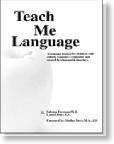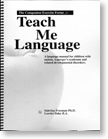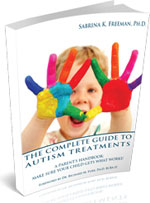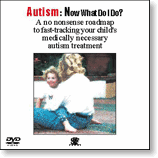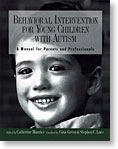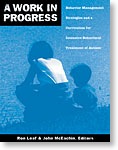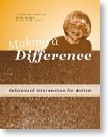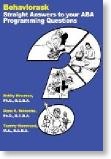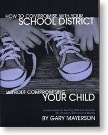bureaucracy
A "How To" Guide for Autism Junk Science
17/04/12 17:12 Filed in: autism | Asperger's Syndrome
The latest attempt to use science to deny children with autism access to treatment came into my e-mail recently. I think this one needs to be shared.
Here’s the background.
The Ontario government has created a set of benchmarks to monitor progress and facilitate clinical decision-making for children in behavioral autism treatment programs. In the vernacular for the rest of us who are outside of government-based healthcare or social services, “benchmarks to facilitate ...decision-making”, means rationing of care. The general idea is to deny ongoing treatment for children with autism who don’t progress quickly, per a set government-approved schedule. This, of course, is to the benefit of the public purse at the expense of children with autism.
Regrettably, this article, Testing the Application of Benchmarks for Children in Ontario’s IBI program: Six Case Studies, is now being used to ration autism treatment in the Province of Ontario. Ontario’s method for rationing treatment can only work if junk science is credibly crafted and packaged with faux legitimacy.
Here’s the “how to” ... 5 easy steps to junk science, using the Government of Ontario’s latest gambit as an illustration (although this works equally well in any country with socialized medicine):
Here’s the background.
The Ontario government has created a set of benchmarks to monitor progress and facilitate clinical decision-making for children in behavioral autism treatment programs. In the vernacular for the rest of us who are outside of government-based healthcare or social services, “benchmarks to facilitate ...decision-making”, means rationing of care. The general idea is to deny ongoing treatment for children with autism who don’t progress quickly, per a set government-approved schedule. This, of course, is to the benefit of the public purse at the expense of children with autism.
Regrettably, this article, Testing the Application of Benchmarks for Children in Ontario’s IBI program: Six Case Studies, is now being used to ration autism treatment in the Province of Ontario. Ontario’s method for rationing treatment can only work if junk science is credibly crafted and packaged with faux legitimacy.
Here’s the “how to” ... 5 easy steps to junk science, using the Government of Ontario’s latest gambit as an illustration (although this works equally well in any country with socialized medicine):
- Create a substandard patchwork of programs to treat children with autism, but slap a label on them that reads, “Intensive Behavioral Treatment (IBI).” In other words, use the language of science for programs that are utterly devoid of it.
- Non-randomly observe six children who have completed the substandard, government IBI program (the “direct service model” staffed by government workers). Then use a “case study” method to measure the progress of these children, since scientific rigor is too difficult and costly, and harder to manipulate by self-interested government technocrats. Do not include children who are in high quality programs since it would be inconvenient to provide evidence that children make considerable progress in non-government controlled, privately run programs.
- Create “benchmarks” for terminating treatment based partially on American benchmarks that were not rigorously peer-reviewed. These local so-called “Made in Canada” benchmarks provide government the tools with which to fail kids with autism and thereby prematurely end treatment i.e., ration care.
- To six children, apply these government benchmarks, created by government-owned academics who receive a variety of research contracts directly from government departments and are government witnesses testifying against children with autism in court. Then provide bogus evidence regarding the efficacy of the government funded benchmarks.
- Publish the “evidence” as to the efficacy and appropriateness of these benchmarks in a third-rate Canadian journal where one of the two authors happens to be on the editorial board and the other is the treasurer of the association that publishes the journal. The corrupt academic article then provides scientific legitimacy for government lawyers when these benchmarks are challenged in court.
And Viola!
You’ve created government-approved junk science in five easy steps. Let’s hope Ontario judges are onto this corrupt game and remember what happened the last time junk science was introduced in a Canadian court to defend the Government of British Columbia against the serious charge of constitutional discrimination against children with autism. Dishonest academics in bed with dishonorable government is as ugly now as it was during the landmark Auton Case.
Persons with Disabilities Need Good Laws, Not Good Intentions
19/10/11 16:35 Filed in: autism | Asperger's Syndrome
From time to time, news reports are full of horrible stories regarding the mistreatment of people with autism. Unfortunately, news from Canada suggests the abuse seems to be more entrenched than previously thought, as the blog Facing Autism in New Brunswick lays out. From the prairie province of Alberta to the maritime province of New Brunswick, in Canada, abuse is indeed evident from sea to shining sea. Read more...
Back to School for Children with Autism: When Do I Put my Lawyer on Speed-Dial?
30/08/11 09:21 Filed in: autism | Asperger's Syndrome
For many parents of children afflicted with autism, the end of summer is also the end of a brief respite from the stress and rancor of battling school district officials and staff for appropriate accommodations for your child. Read more...


